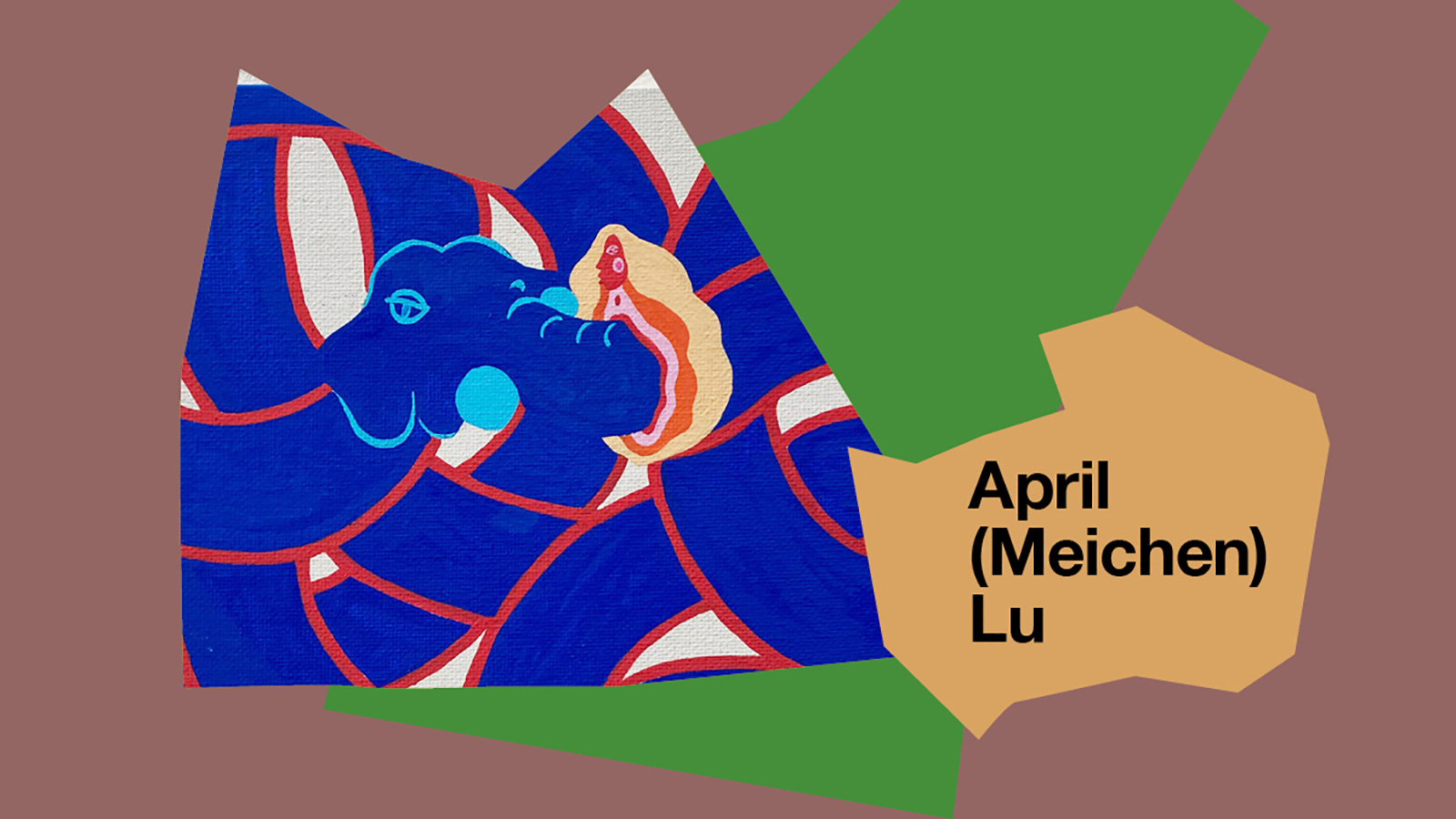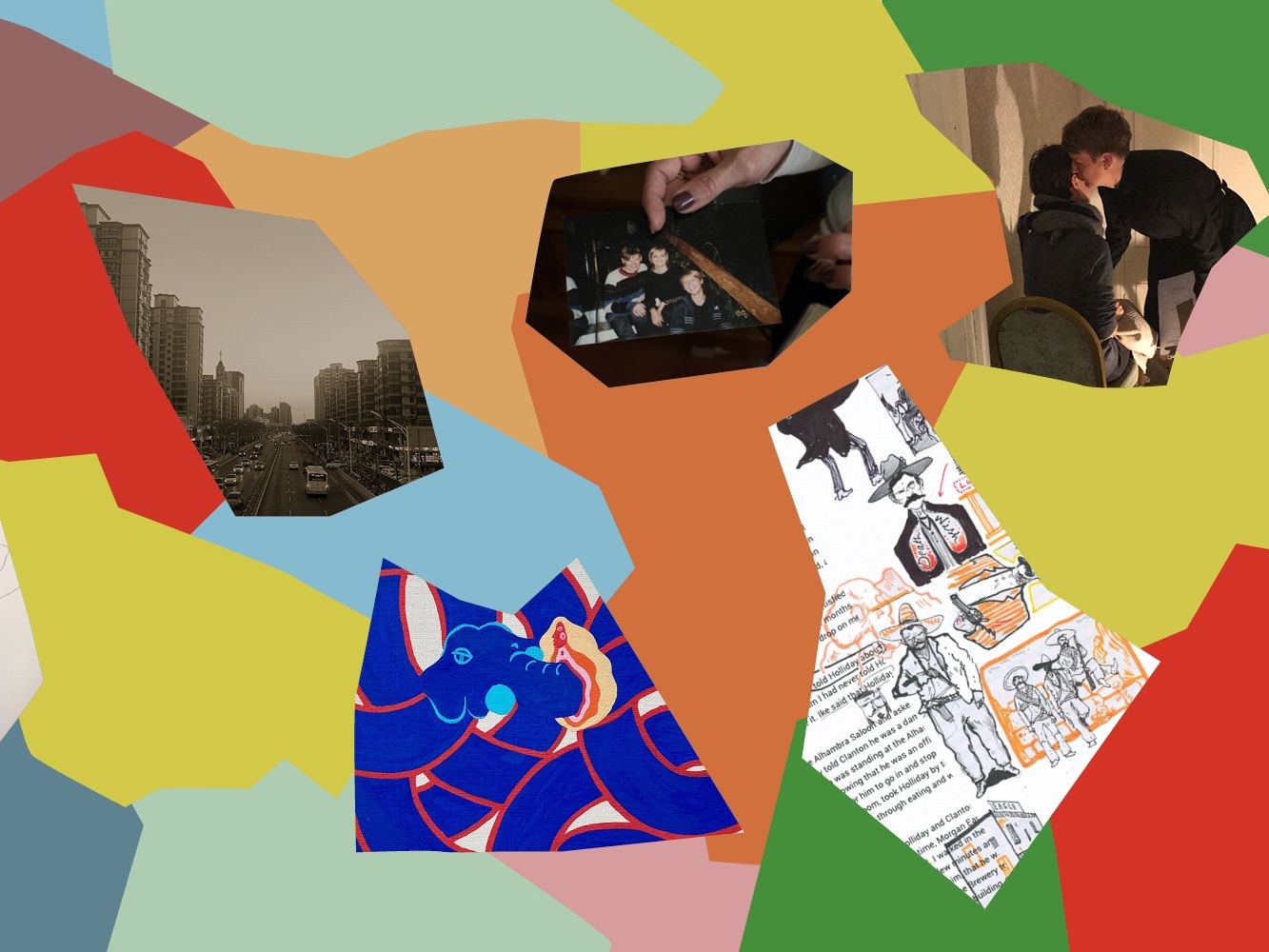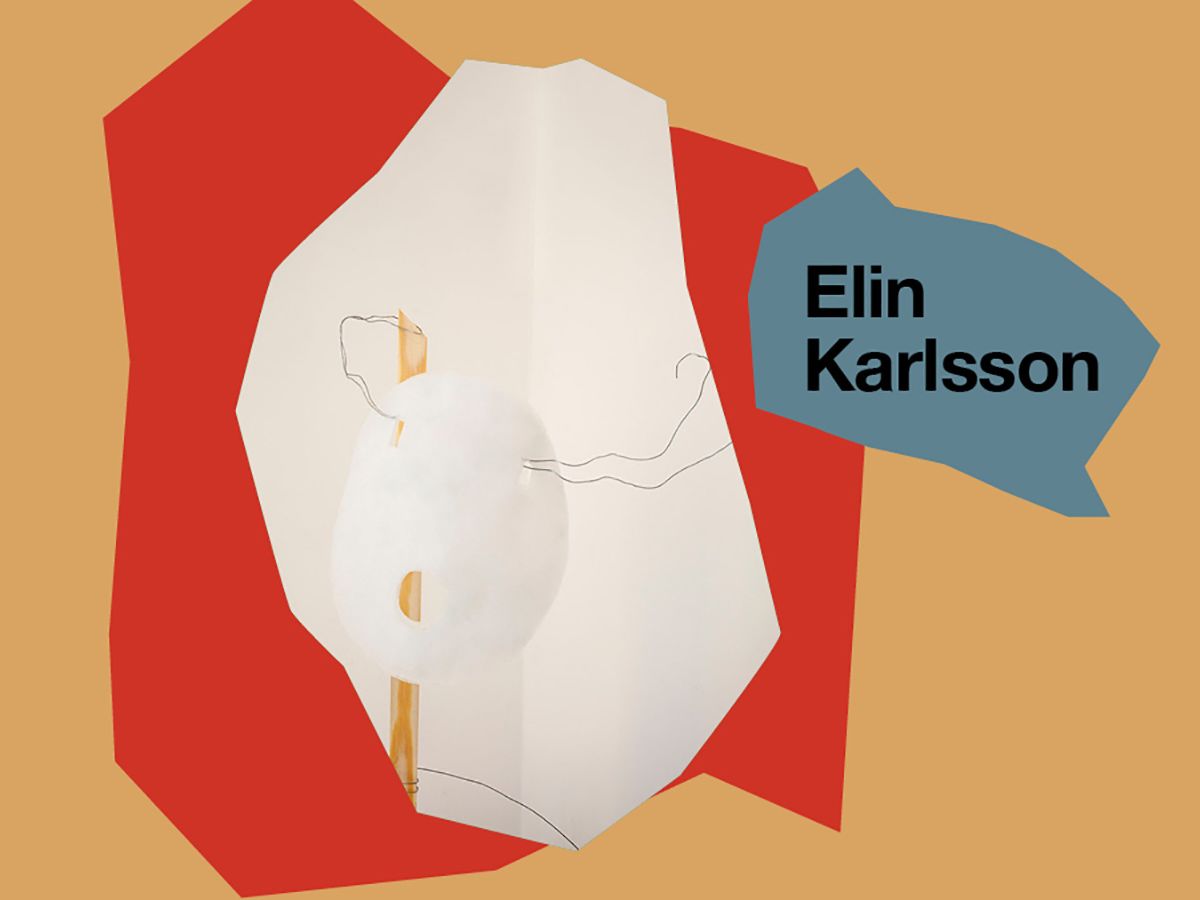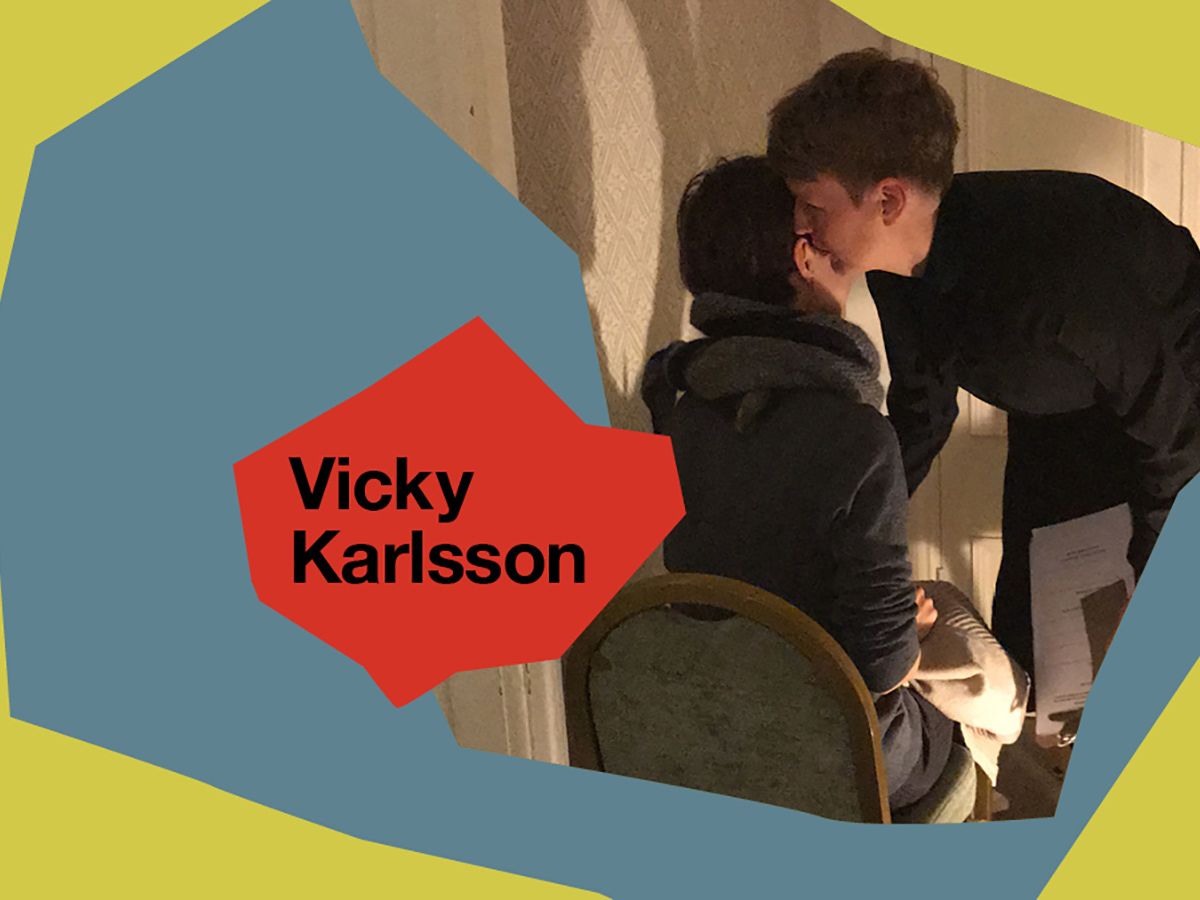At London College of Communication, our research community is home to world-renowned practitioners and theorists who make a vital contribution to our creative culture through a range of activities such as collaborations, partnership projects and doctoral work.
Our second doctoral work-in-progress exhibition, Unfolding Narratives 2, highlights 7 of our PhD students at various stages in their academic journey. Connecting conceptual thinking with practice through explorations of themes such as the body, culture, identity, gender, race, ethics and narrative, this exhibition aims to celebrate the emergence of new and compelling work while inviting wider audience engagement and feedback.
To mark the launch of Unfolding Narratives 2, we caught up with our exhibiting students to explore their practice, current projects, and creative journeys so far.
April (Meichen) Lu
Artist and illustrator April (Meichen) Lu explores representations of the female body through graphic design and comic narratives. Her work aims to demystify and destigmatise sexuality, encouraging people to learn more about their own bodies while developing work which resonates emotionally with the other women's experiences.
We talked to April about challenging socio-cultural taboos, the empathetic power of the autobiography, and the challenges and opportunities offered by creating work in live settings.
(TW: mentions of sex, rape.)

Have you always had a passion for your field of study, or is it something you moved to over time?
As a Chinese woman, I could hardly say the word ‘vagina’ before I came to London and started to research feminist art. The word was a taboo in my country, and all the knowledge I had about my sexual organs was self-taught; Eve Ensler’s play The Vagina Monologues (1998) showed me that I wasn't the only woman who lacked awareness about her own genitalia.
It has been argued by feminist scholars that in patriarchal societies, the vagina is considered to experience no extreme pleasure. As early as 350 BC, Aristotle believed the vagina to be vulgar, low-level and passive, and that only the penis could experience an authentic orgasm (De Beauvoir, 1949). Feminist body art inspired my research, specifically Carolee Schneemann’s ‘vulvic space’ theory which discusses the inseparability of female artists and their sexual experiences while opposing public denial of the extreme pleasure of the woman's vulva (Warr and Jones, 2012).
In my MA graduation project, Intercourse with My Vulva, I first tried to weaken the shape of the human body and focused on building a character based on female genitals. I also created a graphic novel that reflects one of the most common feminist social issues, rape, with a vulva as the protagonist. People's responses to my work inspired me to further develop the vulva character in graphic novels and image narratives.
Is there a central ethos, theme or message to your practice?
As a female illustrator, I explore feminist thinking and the use of female genitalia across different fields including fine art, graphic narratives and illustration. I want to portray vulva characters as the main protagonists to further challenge the stereotype and symbolic representation of female genitalia in graphic images, and to awaken the consciousness of female self-acceptance.
My work seeks to determine common issues in the individual development of female genitalia through feedback on - and interactions between - autobiographical graphic narratives and female audiences.
What does your PhD project aim to achieve?
Inspired by feminist art and thinking, my research examines what new understandings can emerge from exploratory practice on autobiographical graphic narratives.
Primarily, it focuses on challenging both the erotic and taboo stereotypes of female genitalia, and using autobiographical graphic narrative practices to emotionally resonate with other females around their own experiences.
How would you describe your creative process?
Basically, it’s around creating a memoir that can recall and summarise the significant moments and experiences of my evolutionary process in becoming conscious of my genitalia.
Why did you decide to undertake your PhD at LCC?
I obtained my MA degree at LCC, so it feels just like my hometown.
LCC is also home to the University's Archives and Special Collections Centre, which includes the Comic Book and Zine Collections, which are great resources for my archival research.

What have been the highlights of your experience so far?
In March 2019, I attended LCC's first PhD work-in-progress exhibition. I exhibited 2 examples of my practice, which I painted on the wall of the gallery space: Plentiful in Ideals yet Skinny in Reality and Horror of The Little Dickhead are both typical examples of my reflective work.
Plentiful in Ideals explores what happened in the first sexual encounter between my ex-boyfriend and I, and uses one of my autobiographical narrative methods which discusses sexual relationships and experiences from a woman’s perspective. This work mainly argues for the comics display method and explores the relationship between text and images, while Horror of The Little Dickhead tells a story of my cervix based on the reflection of my inner activities in a 'self-talking' way. This work offers an example of how I intend to record progress of genitalia exploration through a diary format.
The production of my work in the exhibition space was continuously reflective and random. Challenges happened during the physical action of making which were both technical and psychological. As a practitioner, I was able to consciously test the possible variations of my work during the creation process in the social milieu while exploring new insights offered by a new method of exhibition. As I painted Horror of The Little Dickhead on the wall, I suddenly realised that I was involved as part of a ‘live show’, which occasionally created a performance space for me, like a stage.
This kind of live-creating method had an invisible influence on me psychologically, creating a changed, new version of my work. Horror of The Little Dickhead proves that when under the influence of different social milieus and locales, the predictions of my practice become distinct. I learned how, in these contexts, unknown accidents may occur to the practitioner, leading them into an unpredicted situation where they need to quickly rethink, review and adjust to a new situation.
Although this approach to exhibiting work potentially raises some ethical issues. I verified my hypothesis from the audience's feedback: namely, whether the audience could resonate with me while reviewing my story content. Plentiful in Ideals yet Skinny in Reality was a way of testing whether individuals face similar situations during their first sexual encounter, while Horror of The Little Dickhead tests whether other women experience confusion about their genitals during their growth process.
I concluded 2 types of observations: firstly, as a spectator, where I could observe and record people’s reactions when they were browsing the exhibition; the second was, as a creator, to actively discuss my work with them. Exploring ways to collect authentic feedback from audiences while minimising ethical issues then became my main concern in my following year of study.
Related links:
- Explore more of April's work on her website.
- Explore a range of selected doctoral works in Unfolding Narratives 2.
- Find out more about Research at London College of Communication.





